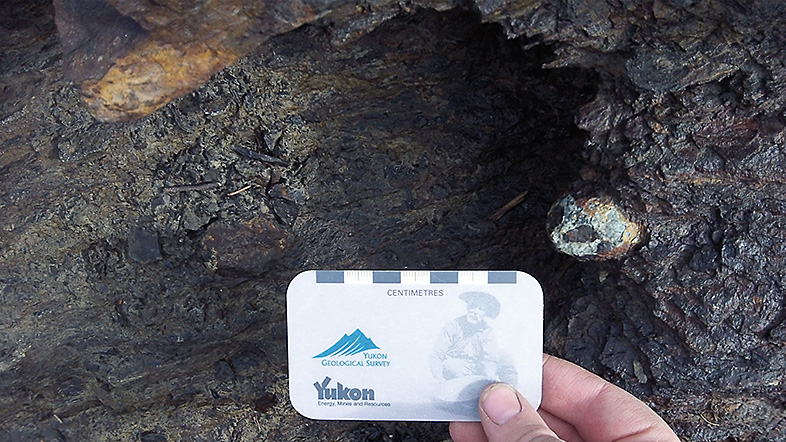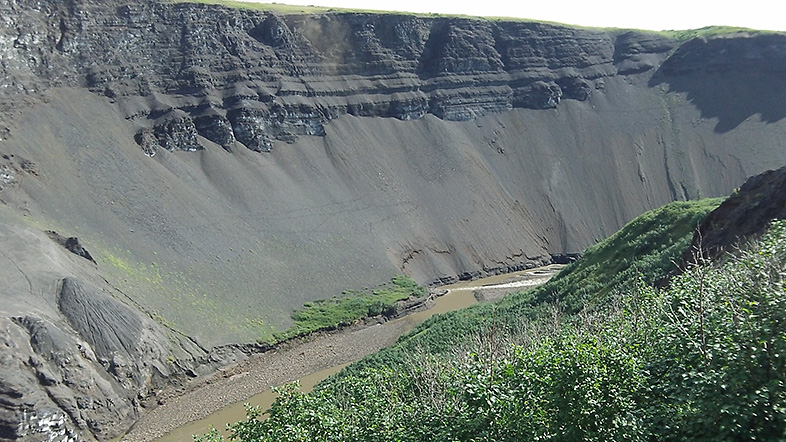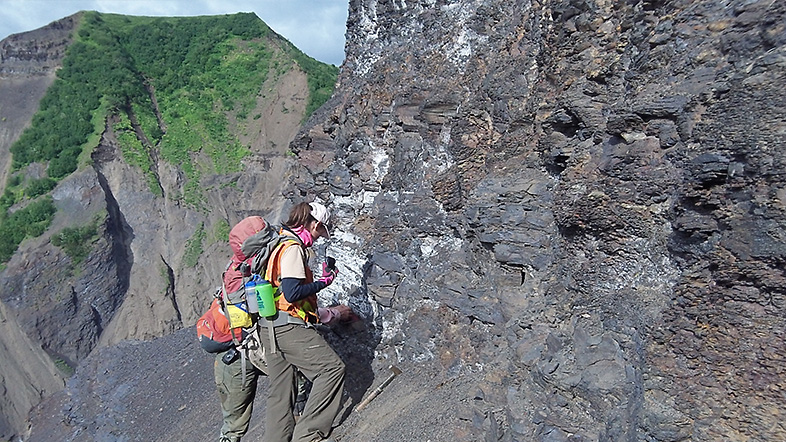Adventures at Big Fish River
This blog post was written by Dr. Kim Tait, Curator of Mineralogy at the ROM. As the new recipient of the YPC Research Fund, Kim has travelled to the northeastern corner of the Yukon—a remote region rich with minerals called Rapid Creek. Her work builds on the legacy of ROM research on phosphate minerals, which are one of the largest and most complex in the mineral kingdom and act as the atomic building blocks of our natural world.
The Nodule Slope
July 21, 2012
One of the most famous sites at Big Fish River is the “nodule slope”. These rocks, Cretaceous in age (around 110 million years old), are a series of flysch deposits. Without going into a full geology lesson here, basically these rocks are made up from sediments in a deep ocean that used to cover this area. In these sediments are fossil ammonites and fossil pelecypods, which would have been deposited in the soft muds and silts and then as more muds and silts were deposited on top of the layers they became lithified, or turned into rock preserving them as fossils.

Although we aren’t all that interested in the fossils per se, we are interested in what has happened to the fossils over time. Fluids carrying elements have travelled through these rock beds over the last 110 million years, filling in the void left by organic parts of the organisms that weren’t preserved with the minerals. We saw many ammonites in the rocks all over, but in one area the slopes are covered with loose ones, broken free from the rocks due to erosion.

Ammonite nodule in the rock

Here you can see our footprints after a couple of days of exploring - zig zagging lines going across the talus.
We have many buckets full of these fossils; each of them contains different rare phosphate minerals. Examining all of these minerals will definitely keep us busy this fall!
We also mapped and extracted some of the rocks here too.

Heidi and Ron investigating the rocks
